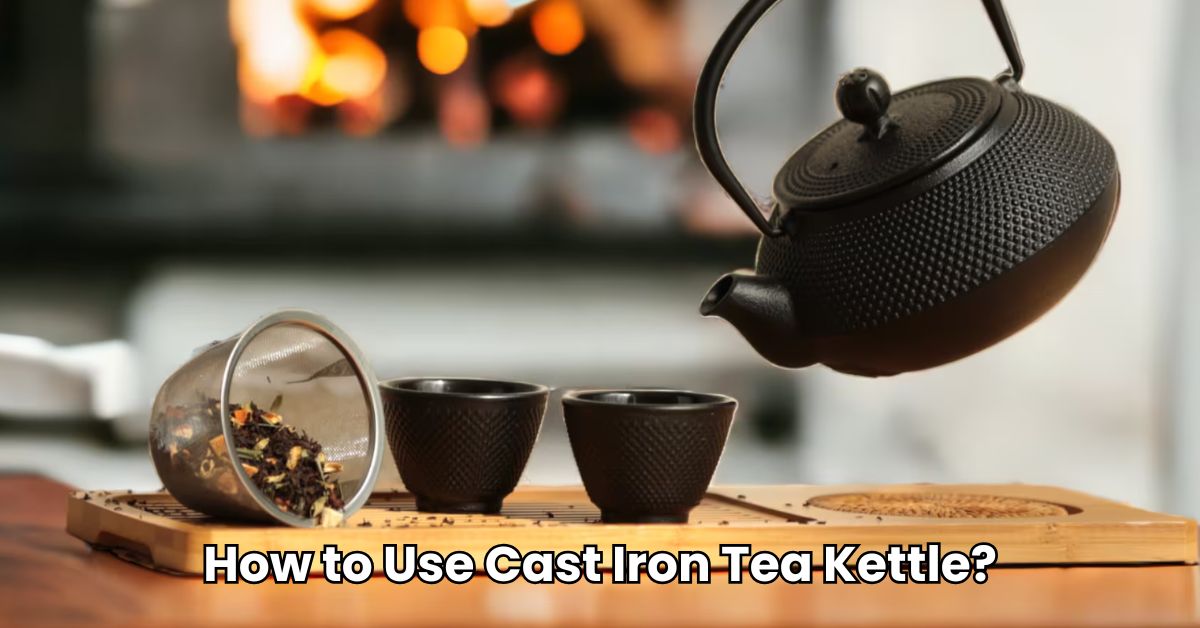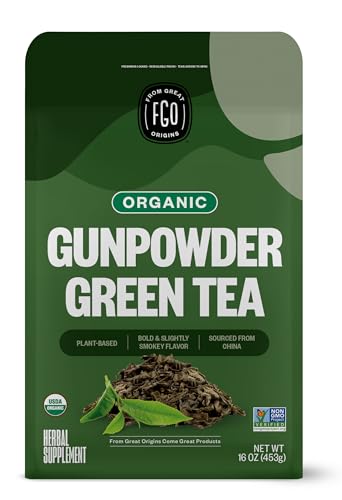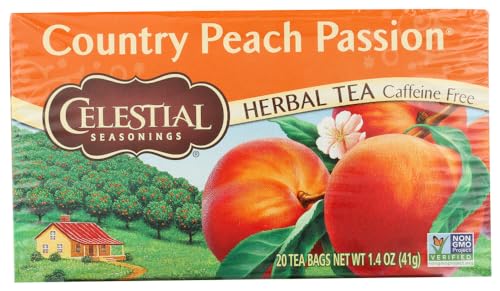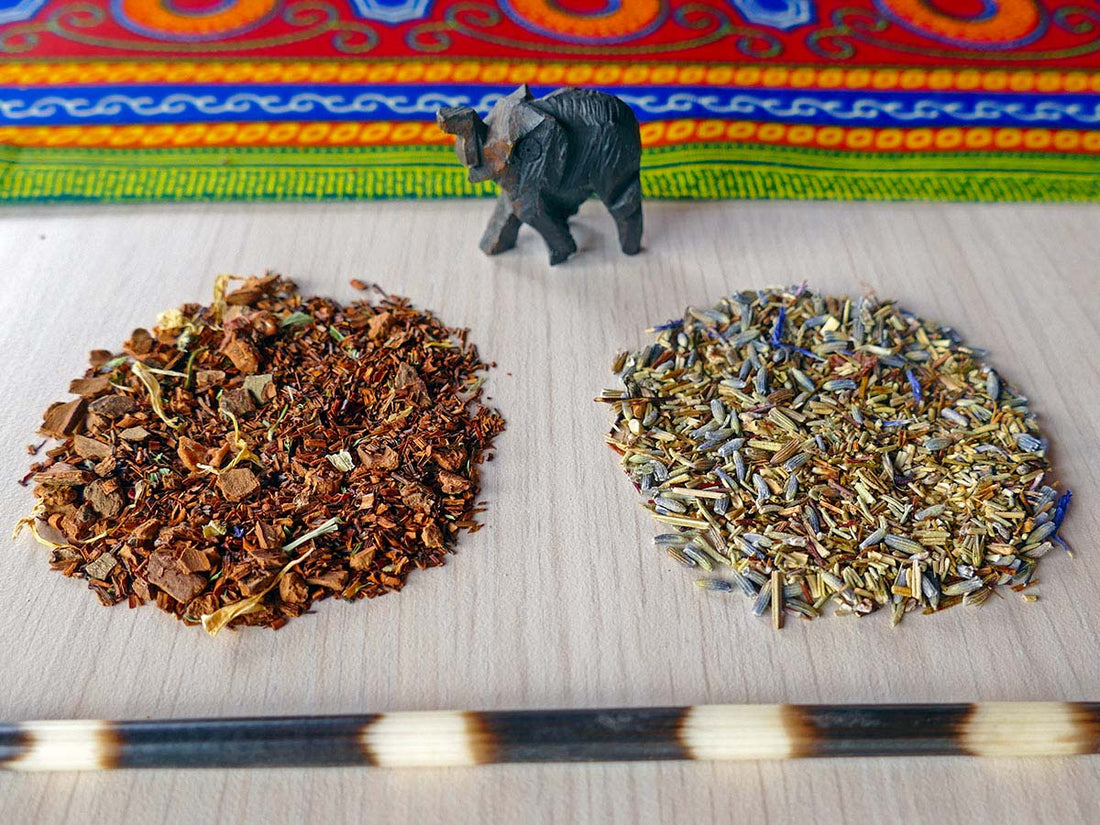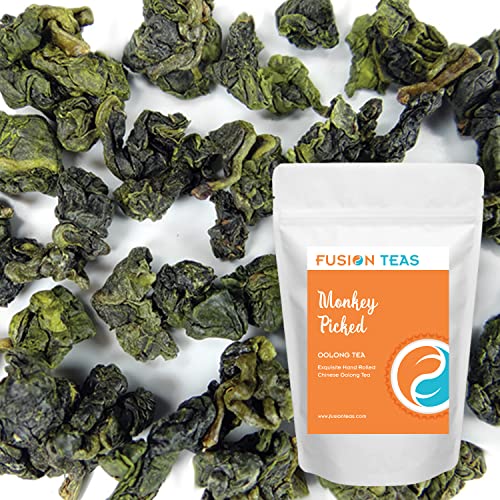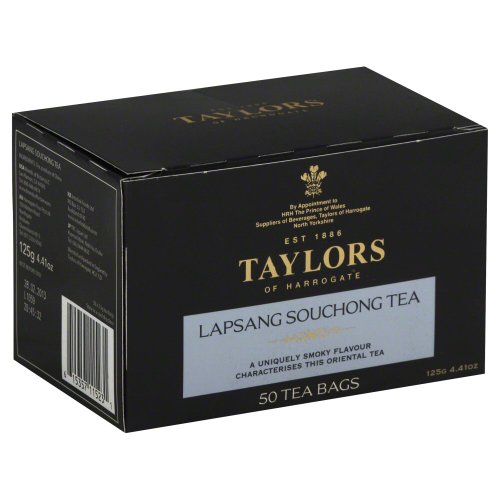Using a cast iron tea kettle can seem tricky. But it’s quite simple.
Cast iron tea kettles are beloved for their durability and ability to retain heat. These kettles have been used for centuries and can make a wonderful addition to your kitchen. They allow you to brew tea in a way that enhances flavor and aroma.
In this guide, we’ll cover everything you need to know about using a cast iron tea kettle. From preparation to brewing, you’ll soon be enjoying a perfect cup of tea. Let’s dive into the basics and make the most of your cast iron tea kettle.
Choosing The Right Cast Iron Tea Kettle
Choosing the right cast iron tea kettle is crucial for a delightful tea experience. The perfect kettle should meet your needs and enhance your kitchen’s aesthetics. Let’s explore the key factors to consider.
Size And Capacity
The size and capacity of your cast iron tea kettle matter a lot. Consider how many people you usually serve tea to. For a single person or a couple, a small kettle of about 20 ounces may suffice. For larger gatherings, opt for a kettle with a capacity of 40 ounces or more.
A table can help you decide:
| Number of People | Recommended Capacity |
|---|---|
| 1-2 | 20-30 ounces |
| 3-4 | 30-40 ounces |
| 5+ | 40+ ounces |
Design And Aesthetics
The design and aesthetics of your kettle should match your kitchen decor. Cast iron tea kettles come in various designs, from traditional to modern. Look for a kettle with intricate patterns if you appreciate classic designs. If you prefer a sleek look, choose a minimalist design.
Consider the following features:
- Color: Choose a color that complements your kitchen.
- Handle: Ensure the handle is comfortable and easy to grip.
- Spout: A well-designed spout ensures smooth pouring without spills.
Remember, a beautiful kettle can be a conversation starter during tea time.
Seasoning Your Cast Iron Tea Kettle
Seasoning your cast iron tea kettle is crucial for maintaining its longevity and ensuring your tea tastes great. This process creates a natural, non-stick coating that prevents rust and improves the kettle’s performance over time. Let’s dive into the details of why seasoning is important and the steps to get it right.
Why Seasoning Is Important
Seasoning your cast iron tea kettle offers several benefits. The main advantage is that it prevents rust. Cast iron is prone to rusting if not properly maintained. A well-seasoned kettle will have a protective layer that repels water and moisture.
This process also enhances the flavor of your tea. Over time, the seasoning builds up, creating a unique, rich taste that can’t be replicated. It acts as a non-stick coating, making cleaning easier and ensuring the kettle lasts longer.
Steps To Season Your Kettle
- Clean the Kettle: Wash the kettle with warm, soapy water. Use a sponge or brush to remove any dirt. Rinse thoroughly and dry with a soft cloth.
- Apply Oil: Coat the inside and outside with a thin layer of vegetable oil. Be sure to cover all surfaces evenly.
- Heat the Kettle: Preheat your oven to 350°F (175°C). Place the kettle upside down on the middle rack. Place a baking sheet below to catch any drips. Bake for one hour.
- Cool Down: Turn off the oven and let the kettle cool inside. This allows the seasoning to set properly.
- Repeat if Needed: For best results, repeat the seasoning process two or three times. This builds a stronger, more effective layer.
Following these steps ensures your cast iron tea kettle stays in top condition. Regular seasoning keeps it rust-free and enhances the flavor of your tea. Happy brewing!
Preparing Your Tea Kettle For Use
Preparing your cast iron tea kettle for use is an essential step. This ensures a great tea experience and prolongs your kettle’s lifespan. Proper preparation involves cleaning the kettle and boiling water for the first time. Follow these steps to get your tea kettle ready.
Cleaning The Kettle
Start by rinsing the kettle with warm water. Do not use soap or detergents. These can leave a residue and affect the taste of your tea. Instead, use a soft brush to scrub the inside. This helps remove any dust or particles. Rinse thoroughly again with warm water.
Next, dry the kettle with a soft cloth. Ensure it is completely dry to prevent rust. You can also let it air dry for a few hours. This step is crucial for maintaining the quality of your cast iron tea kettle.
Boiling Water For The First Time
Fill the kettle with water up to three-quarters full. Place it on the stove and heat it slowly. Bring the water to a boil and let it simmer for about 10 minutes. This process helps to remove any remaining impurities inside the kettle.
After boiling, carefully pour out the water. Let the kettle cool down naturally. Rinse it again with warm water and dry it thoroughly. Your cast iron tea kettle is now ready for regular use.

Credit: www.republicoftea.com
Boiling Water In A Cast Iron Tea Kettle
Boiling water in a cast iron tea kettle is a delightful experience. The process enhances the flavor of the tea and adds a touch of tradition. This section will guide you through the steps to boil water in a cast iron tea kettle. Let’s dive into the details.
Optimal Water Levels
Fill your cast iron tea kettle with fresh, cold water. Do not overfill it. Leave some space at the top. This allows the water to boil without spilling. Aim for about 80% full. This is the optimal water level.
Heating Techniques
Place the kettle on a stovetop. Use medium heat for the best results. Avoid high heat to prevent damaging the kettle. Wait until the water reaches a rolling boil. This might take some time. Patience is key.
If you use an electric stove, ensure even heat distribution. If you use a gas stove, keep the flame low to medium. Never leave the kettle unattended. Safety first.
Brewing Tea In A Cast Iron Tea Kettle
Brewing tea in a cast iron tea kettle can elevate your tea experience. The cast iron material retains heat longer, ensuring a warm cup of tea. Let’s explore how to make the perfect tea using a cast iron kettle.
Selecting The Right Tea
Choosing the right tea is essential. Consider the type of tea you enjoy. Green tea, black tea, oolong, or herbal blends all work well.
- Green Tea: Delicate and grassy.
- Black Tea: Bold and robust.
- Oolong Tea: Semi-oxidized and fragrant.
- Herbal Tea: Caffeine-free and soothing.
Ensure you use loose leaf tea for the best flavor. Pre-packaged tea bags often lack the depth of flavor found in loose leaves.
Steeping Techniques
Steeping tea in a cast iron kettle requires patience. Here are some steps:
- Fill the kettle with water and bring it to a boil.
- Allow the water to cool slightly, especially for green tea.
- Measure the loose leaf tea using a teaspoon.
- Place the tea leaves in a tea infuser or directly in the kettle.
- Pour the hot water over the tea leaves.
- Cover the kettle with its lid.
- Steep the tea for the recommended time.
The steeping time varies with the type of tea:
| Tea Type | Steeping Time |
|---|---|
| Green Tea | 2-3 minutes |
| Black Tea | 3-5 minutes |
| Oolong Tea | 4-7 minutes |
| Herbal Tea | 5-10 minutes |
After steeping, remove the tea leaves or infuser. Pour the tea into a cup and enjoy the rich flavors.
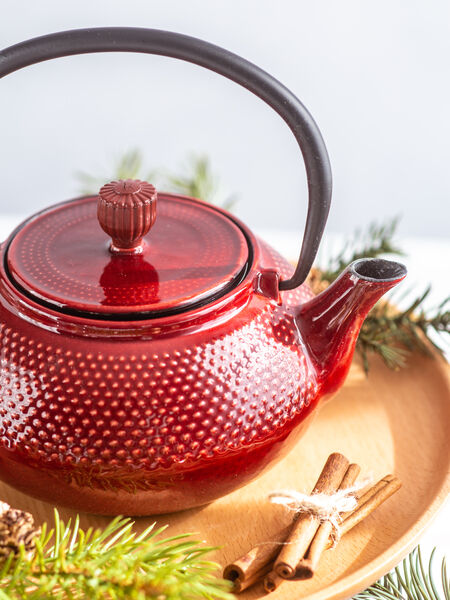
Maintaining Your Cast Iron Tea Kettle
Maintaining your cast iron tea kettle is essential for long-lasting use. Proper care ensures your kettle remains in good condition, providing you with delicious tea every time. Follow these simple steps to keep your kettle clean and rust-free.
Regular Cleaning Tips
Always let your kettle cool before cleaning. Use warm water to rinse the inside and outside. Avoid using soap, as it can strip the seasoning and affect the taste of your tea. Gently scrub with a soft brush or sponge. Dry the kettle completely with a soft cloth.
For stubborn stains, use a mixture of water and baking soda. Apply the mixture, scrub gently, and rinse thoroughly. Never use harsh chemicals or metal scrubbers. They can damage the kettle’s surface.
Preventing Rust
Rust is the enemy of cast iron. To prevent it, always dry your kettle thoroughly after cleaning. Store your kettle in a cool, dry place. Avoid leaving water in the kettle for long periods.
You can also season your kettle to create a protective layer. Rub a thin layer of vegetable oil on the inside and outside surfaces. Heat the kettle on low for a few minutes. Let it cool completely before storing. This process helps prevent rust and maintains the kettle’s seasoning.
If rust does appear, don’t worry. Use a mixture of water and baking soda to scrub the rust away. Rinse and dry thoroughly, then season the kettle as described.
Storing Your Cast Iron Tea Kettle
Proper storage of your cast iron tea kettle is crucial. It ensures the kettle remains in good condition. Follow these tips to store your kettle correctly. This way, you can enjoy it for years.
Proper Storage Conditions
Store your cast iron tea kettle in a dry place. Moisture can cause rust. Make sure the area is well-ventilated. This prevents any dampness from building up.
Place the kettle on a soft cloth. This avoids scratches. Avoid stacking heavy items on top. It can damage the kettle.
Avoiding Common Mistakes
Do not store your kettle with water inside. This can lead to rust. Always dry the kettle thoroughly before storing.
Avoid using metal utensils inside the kettle. They can scratch the surface. Use wooden or plastic utensils instead.
Keep the lid slightly open. This allows air to circulate. It prevents musty smells from developing.
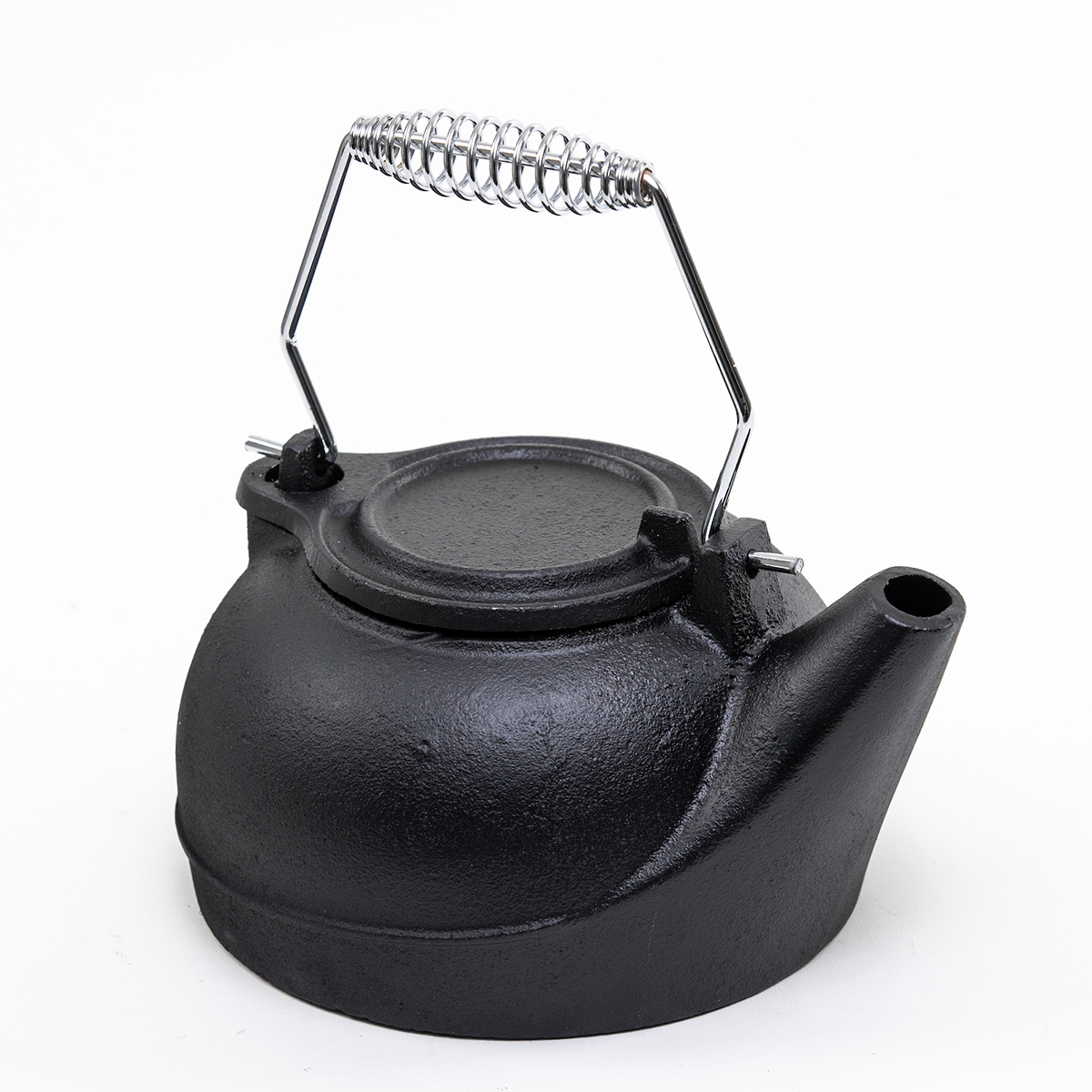
Credit: www.usstove.com
Troubleshooting Common Issues
Owning a cast iron tea kettle is a joy, but it comes with challenges. Addressing common issues will ensure a seamless tea-making experience. Let’s dive into troubleshooting some frequent problems.
Dealing With Rust
Rust can be a common issue with cast iron tea kettles. Regular maintenance helps prevent rust. If rust appears, don’t worry. Here’s what you can do:
- Remove loose rust with a soft brush.
- Mix equal parts vinegar and water in the kettle.
- Boil the solution for 30 minutes.
- Rinse thoroughly with water.
- Dry completely with a soft cloth.
- Apply a thin layer of vegetable oil inside the kettle.
Prevention Tips:
- Always dry your kettle after each use.
- Store in a dry place.
- Avoid leaving water in the kettle for long periods.
Addressing Leaks
Leaks can spoil your tea-making experience. First, identify the leak source. Here’s a step-by-step guide to fix leaks:
- Check for visible cracks or holes.
- If found, clean the area with mild soap and water.
- Dry the area completely.
- Apply a food-safe, high-temperature sealant to the crack or hole.
- Allow the sealant to cure as per the manufacturer’s instructions.
Additional Tips:
- Inspect your kettle regularly for signs of wear.
- Avoid dropping or banging your kettle to prevent damage.
A well-maintained cast iron tea kettle lasts longer and performs better. Address rust and leaks promptly to enjoy perfect tea every time.
Frequently Asked Questions: Using Cast Iron Tea Kettle
How Do You Season A Cast Iron Tea Kettle?
To season a cast iron tea kettle, coat it with vegetable oil. Then, bake it in the oven at 350°F for an hour. Let it cool completely before use.
Can You Boil Water In A Cast Iron Tea Kettle?
Yes, you can boil water in a cast iron tea kettle. Ensure the kettle is properly seasoned to prevent rust. Always dry it thoroughly after use.
How Do You Clean A Cast Iron Tea Kettle?
Clean a cast iron tea kettle with warm water and a soft brush. Avoid soap or harsh detergents. Dry it thoroughly to prevent rust.
Why Is My Cast Iron Tea Kettle Rusting?
Your cast iron tea kettle may rust if not properly seasoned or dried. Ensure it’s thoroughly dried after each use. Regular seasoning can prevent rust.
Conclusion
Using a cast iron tea kettle is simple and rewarding. Follow these steps to enjoy a perfect brew. Keep your kettle clean and dry to maintain its quality. Regular use will improve the flavor of your tea. Enjoy the process and the rich taste that comes with it.
Happy tea brewing!

